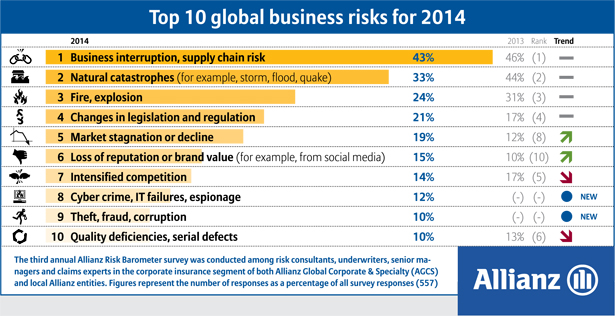The survey highlights the increasing complexity of business risks, including a combination of new technological-, economic- and regulatory-related risks, potentially creating a systemic threat for businesses. Allianz suggests that companies can respond to these growing challenges through stronger internal controls, combined with a holistic approach to risk management.
2014 will also be a critical year for companies when it comes to dealing with the threat posed by a number of emerging perils explains Axel Theis, CEO of Allianz Global Corporate & Specialty SE (AGCS): “Recognizing the impact of interconnectivity between different risks is a top priority for risk managers. Today’s business continuity plans must prepare for an increasing range of risk scenarios which need to reflect the sometimes hidden knock-on effects.”
In its 2014 Risk Barometer, Allianz highlights that businesses are more concerned about cyber and reputational risks than ever before. In the prolonged sluggish economic environment, they also worry more about market stagnation/decline and, especially in growth markets, about talent shortages.
Not least due to the ‘Energiewende’ (energy transformation), German companies in particular are highly occupied by changes in regulation and legislation, elected a top three risk. According to Michael Bruch, Head of R&D, Risk Consulting, AGCS. “With the planned transition to renewable energies in Germany, business strategies for the power supply industry have to be reconsidered. On the other hand, there is big potential for Germany to benefit from its new energy policy by leading the transition to the energy world of the future.”

